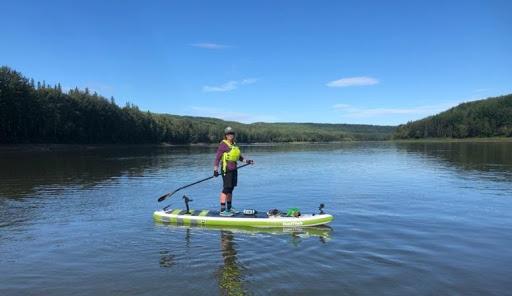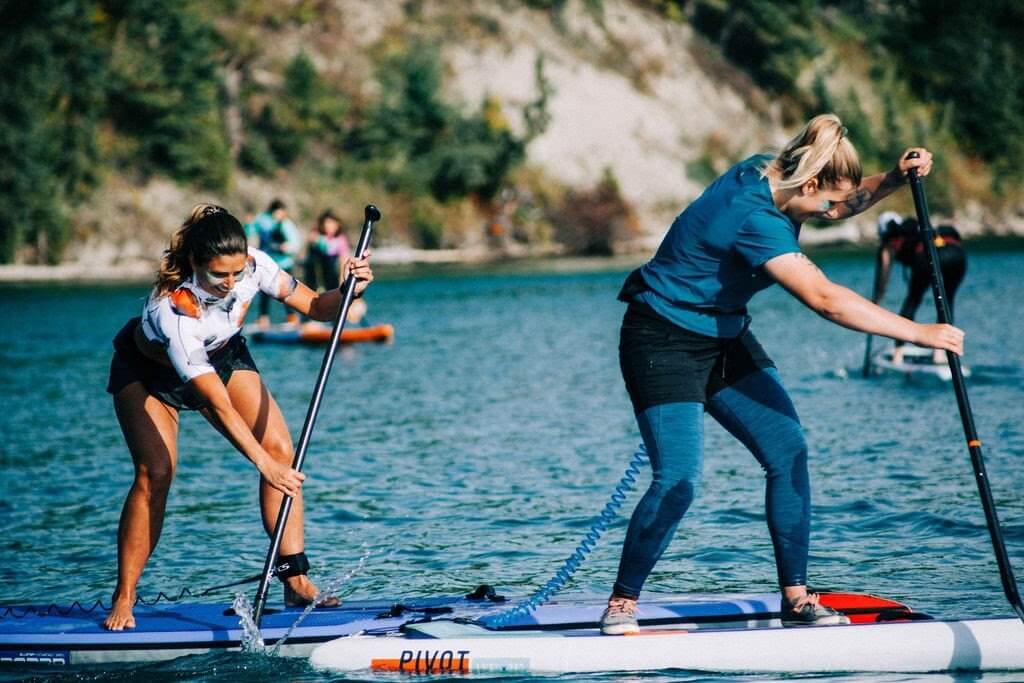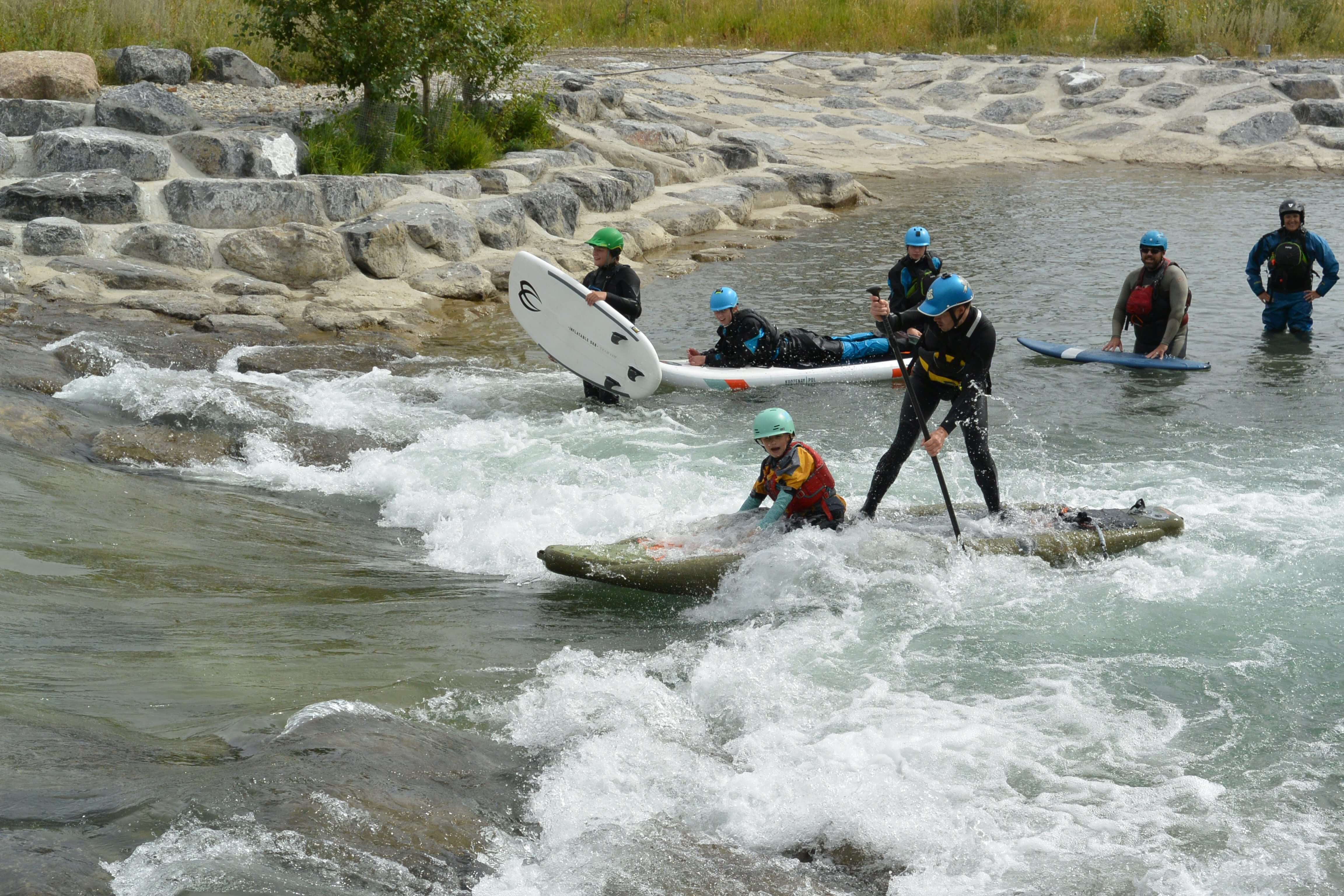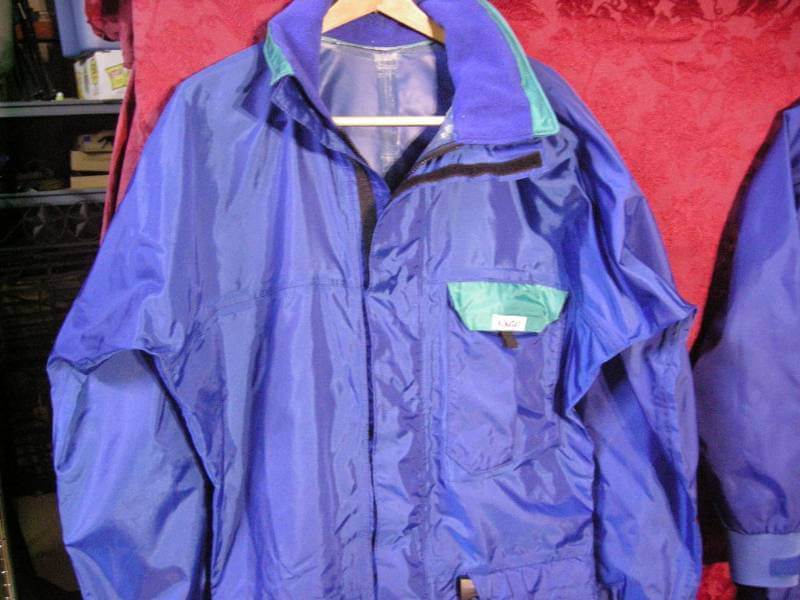BLOG #17
ISN’T LIFE GRAND…
THE FIRST SUPPORTED SUP EXPEDITION THROUGH THE PELICAN RAPIDS TO THE GRAND RAPIDS
For over a decade since I’ve learned about The Grand Rapids I’ve wanted to paddle to them, even before I was a paddle boarder. After paddle boarding on The Athabasca River I knew with certainty one day I wanted to attempt this route via SUP.
Many people warned me that it was too dangerous, how will I get through the Pelican Rapids? Sometimes after hearing numerous comments that it’s not possible you just stop telling people your intentions. I gathered as much intel about the river as I could and set up safety parameters to minimize the risk for the adventure I was about to embark on.
My summer was spent learning new skills, paddling on white water in Class 2-3+ Rapids which I will be honest was very challenging for me. I cried the first three days of classes. I had never swam in currents like this before. I’m a strong swimmer but realizing the obstacles and risks that are in these river systems is humbling. By the end of my River 2 Skills course I felt confident in swift water at least to the extent I needed for the Athabasca River.
Friends with their jet boat who had experience on this portion of the river were joining us on my second day of paddling, therefore in my mind I had to get 100 miles done in two days before they joined us in order to have time to go to the Grand Rapids and tour them on the third day.
Due to scheduling difficulties, I was unable to secure a paddle partner that had the skills needed for this type of expedition. Therefore, I asked my husband to follow and float with me in his jet boat. I may be adventurous but I’m not irrational. Mitigating the risk versus reward factors are always in the forefront of my mind. Paddling alone is unsafe on river systems and jet power was a great option to allow me to push my limits and knowing I still had a viable escape should anything go wrong.
The map gives an overview of the system I was paddling into. I chose to leave Poachers Landing and head to Grand Rapids Wilderness Adventures. Unless you choose to paddle through to Fort McMurray you need a ride up river by boat or helicopter.
The morning was picture perfect, pink sunrise as we left home then a slight fog haze over the calm river as we launched from Poacher’s Landing. Two very different types of watercraft were launching on this day. One human powered and one jet powered.
As I donned my gear: PFD, shoes, leash, dry suit, gloves, helmet and loaded my board with a throw bag, snacks, sunscreen, survival gear and clothes; like any endurance event the first hour is fiddling with everything until it feels right. Which included stripping off my dry suit/helmet as the temperature was warm and sunny. The rapids were a day away of paddling yet I didn’t need it for the water I was on.
I took my Badfisher SUP which isn’t a touring SUP but it was what I had. A Selfie would have been amazing for this trip and slightly faster down the river, something I will be considering for the next trip I do like this.
Paddling the first hour I only got 5 miles done…oh dear. I wanted to average 6 mph, around 10 km, to make the 50 miles (80 km) a day. I’m sure you’re wondering why as a Canadian I track distance in miles. Two reasons: First, running for so many years, mileage is often in miles on treadmills therefore I understand it easier. Second, 50 miles seems plausible, while 80 km seems way too far lol. Life is about playing head games to trick yourself into believing you can finish your goal.
I won’t lie - the first 15 miles were hell. Slow hell. I really didn’t know if I would make it that day. My arms hurt, back hurt, body hurt. I thought there was no way I could finish 9 hours of this repetition. I hit a downwinder around 15 miles, and it was heaven on angel wings pushing me downstream. Then I hit 25 miles (halfway) mentally it is easier to now convince myself that anything is possible.
Then the headwinds came. Crawling along at a slow pace I was frustrated again. When I hit 40 miles into the day I thought I can’t do 10 more in this wind. Reprieve came and I was able to paddle hard once more. Hitting Iron Point (see map) was gale force wind, I had to push through with anything left in my arms to get around that bend. I was at 49.7 miles for the day and DONE!
We scouted a peninsula that seemed ok for the night, however the openness of it and lack of dry land discouraged us from tenting there. The mapping isn’t exact and by my map I had 5 more miles to go to an island; I just didn’t think I had that in me. My husband set off in the jet boat, we carried radios and I told him to radio me if it was worth me paddling further.
Across the radio he said it was just around the next bend (read 3 more miles) and after the small break I had I was able to slowly paddle to our camp for the night. 53 miles (85.29 km) under my paddle for the day!
I’ll be honest I’m not sure I would have fed myself if Trevor didn’t make me supper. I was absolutely spent. Barely even hungry, (if you personally know me this is unfathomable)! We ate and I tucked into our bed on the boat for the night as the mosquitoes on shore were bad and there wasn’t a great spot for a tent, we improvised.
It was a magical night looking through clear windows at the sunset, watching the stars above and listening to the family of beavers slap their tails in contention at our boat considering it an invasion for the night. Irony; being so exhausted you cannot sleep. However, over the years of events I have learned that I am resting my body even if I’m not sleeping which is just as important. Instead of berating myself for not sleeping I remind myself I’m resting and will wake up rested.
Subconsciously it always felt like I had to be going to make time. I had another 50 miles to cover again, this time on dead arms. If you ever want to learn an efficient forward stroke in paddle boarding here is the secret: paddle on arms that just exhausted themselves the day before. I laughed as my form had to be efficient and gentle to not trigger any overt soreness. Wondering if my arms would even take me far that day was a real consideration.
Having read David Goggin’s book “Can’t Hurt Me” resonated with me and I often reminded myself of the principles he discussed. Most of us function at 20% of our capacity. Yes, we get tired, sore, bored blah blah blah but reality is we’re just touching the surface of what we’re capable of a that line. So, when the going got tough I reminded myself that I was just getting to the sweet spot.
The Pelican Rapids were to be at Mile 34 or 54.4 km on the day (Mile 87 or 139.2 km into the trip) and I worried more about my energy level to paddle them more than my skill to make it through. Your best is so different when you’re rested and fresh verses when you’re sore and tired. After we passed The Pelican Hilton I made my way to river right as this was the safest passage through the rapids and I didn’t want to get stuck on the wrong side as features on rivers come at you faster than you think.
As we came around a bend I looked ahead and there they were… a mile away. I gave myself the option to hop in the boat if I didn’t feel safe going through them, as I said ego shouldn’t play a role on the river unless you’re looking to get injured or worse. I looked at my husband and told him I was going as they looked runnable.
Entering them was easy, and other than one section where the nose of my board got a bit under, the waves they were fun. I’m still waiting for my legs to stop shaking when I paddle white water, the adrenaline dump was wonderful to allow me to not feel my fatigued arms. As I finished the bend they were on I was greeting with a pleasant 40-50 km/hr head wind. Seriously.
And so began the final 10 miles of head wind to get to camp for the night along with two more rapid sections which were all very navigable and easy. I would have run rapids all day over the winds that were unrelenting.
With my adrenaline gone and nothing left but grinding to do, we headed towards White Rock for the night, and I thought I could just float and get there by 10 pm because I stayed on my knees for 8 of those 10 miles. I was a sail anytime I stood up and it pushed me up river.
We still hadn’t seen our friends meeting us on the river, by my Garmin it said I still had 3 miles to cover when magically they both appeared. I came around a corner and saw the rock followed by hearing a jet boat with my Coke in it. 47 miles on the day, and exactly 100 miles in two days I did it!
Many years ago, while doing ultra-running events my crew gave me an ice-cold Coke during the Lost Soul Ultra. This literally saved my race and life. The sugar, caffeine and cold all meld together to create a symphony of happiness while expending serious calories. Since I hadn’t brought one, l sent an In-Reach message to our friends to bring me some, after all isn’t that the point of an InReach lol. I thought about that Coke all day. It was heaven when they showed up.
Oreos, sour berries, trail mix, dried mangoes, bars, pretzels all are staples of long-distance events for me. Like many people, eating when under extended cardio outputs doesn’t agree with the digestive process. Many an ultra-event has a table full of bagels, chips, gummies, candy, cookies any kind of simply carbohydrate that can be utilized and processed into the bloodstream easily. I also ate sandwiches for lunch, veggies and fruit but while on my board it was simple carbs and fats.
We stayed the night at a friend’s cabin on the river, hard to believe with the water tables and ice jams the river had flooded the cabin which was at least 100 ft above the current water line. Again, sleep eluded me as sleeping in a cabin with seven people isn’t conducive to a great sleep for a light sleeper.
Up as the sun rose, I was drinking coffee and itching to get out on the water. By 7 am I walked down to launch in the fog. In life you learn by making mistakes.
I should have stayed in bed that morning and enjoyed a big hearty breakfast with everyone else instead of trying to push on.
Instead I got to spend two hours sitting on a ledge here watching the fog disperse slower than a herd of turtles.
Trying not to become hypothermic was a challenge, my feet even with wool socks in my shoes were wet and cold. My hands tucked into my PFD trying to stay warm and doing the hypothermia hustle on the side to try to increase blood flow to my extremities. I did have extra clothing but to put on but I kept thinking it would lift soon.
Lesson learned. Don’t leave in the fog unless it is in the middle of lifting and dress warmer than you think in the morning. I was glad I listened to my intuition and waited out the fog.
Hearing rocks in the obscureness of the fog was challenging to navigate. If I would have rounded the bend I was met with gravel bars, shallow water and a set of rapids. Not fun with little visibility.
Having been held up for two hours and knowing the jet boats were leaving soon I had to push hard. My plan was to arrive at Grand Rapids Wilderness Adventures by noon. This way we could hop in the jet boats and check out the Grand Rapids (Class VI unnavigable). Unsure of the approach on a SUP and having not seen it before I took the safe route to scout it before running the Little Grand in the future.
I was 15 miles into my day of what I anticipated to be 30 miles when I heard the boats. They sped off ahead to fish on the way and wait for me to catch up. Feeling the time crunch I threw everything I had into my paddle strokes. Incredible physiological effects occur after three days of paddling, soreness subsided and I was in unison with the river and my board. Nearly dreading the end of the journey but also excited to relax with friends and my husband.
Passing the boats as they fished I could see the jet boats parked ahead at Grand Rapids Wilderness Adventures and the finish. And only 21 miles on the day instead of 30 woohoo!
It’s always anti-climactic when you get to your destination, no fanfare or cheering just a deep appreciation for what you know you’ve done to get there.
Time to check out what we came to see, The Grand Rapids!
We off loaded our boats and hopped into one to head down river and see if we could walk on the concretions that make up the rapids. Unfortunately, the water was too high for us to do so. We had to make due with parking on river right to then bush wack to an outlook point.
Still humbling to see the power far away, this photo is looking over The Little Grand Rapids and Grand Island.
121.83 Miles (196 km), 21:45 hrs, 47819 paddle strokes to get me to this stunning secluded place that few if any will get to visit in their lifetime.
The beauty of inflatable boards is deflate and head home. While driving up river in our boat the distance I had covered on my board overwhelmed me as tears welled up in my eyes. Sometimes looking back over what you’ve done is humbling. I am so thankful for a body that can carry me through these adventures and the people who have supported me along the way.
Happy paddling.
I Live Life Now,
Lisa Stocking
AQ AMBASSADOR
CSEP-CPT/RYT 200 Yoga Instructor
Advanced Flatwater SUP Instructor Paddle Canada

































































